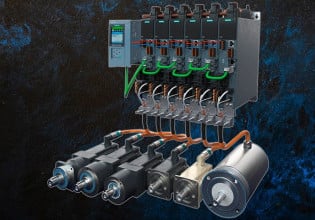Schneider Electric Prepares for the Future of Smart Grids with New EcoStruxure DERMS
This week, Schneider Electric announced they are expanding their EcoStruxture brand with the introduction of EcoStruxure DERMS.
Schneider’s newest product announcement introduces their DERMS for grid power management, including control systems, monitoring, and future-facing modeling for grid systems.
What Is a DERMS?
DERMS stands for distributed energy resource management system. As the name implies, these software systems are designed to manage distributed energy resources or DERs. Distribution system operators (DSOs) often use DERMS in conjunction with SCADA systems to manage grid voltage and power flow.
DERMS are sometimes referred to in the context of integrating solar, wind, or other energy systems into a pre-existing grid. In theory, DERMS provide key functions that make possible two-way energy flow without sacrificing power quality or system safety.
According to GMT Research, the process for getting a DER integrated into a grid looks something like this:

The lifecycle management process for DERs. Image used courtesy of GTM Research.
It’s worth noting that GTM Research also questions whether the term DERMS is too broad and is rendered less useful for it.
Schneider calls DERMS a “grid-focused solution” for addressing DERs in an age where systems are increasingly digitized, decentralized, and, to an extent, democratized as grid users look to gain more control over their energy usage.
Schneider’s Newest DERMS Solution
The new DERMS allow engineers to model DERs, opening the door to optimizations to control systems, use monitoring, capacity analysis, and predictive modeling.
The DERMS approach aims to provide a comprehensive, flexible overview of a grid’s operations both on the aggregate and on the granular levels, as well as the system and local levels.
Part of their vision is to pose the EcoStruxure DERMS as a scalable system for projects of any size. The product announcement claimed that their program gives the ability to manage not only small projects vs. large or local vs. system, but also the ability to manage across various ownership of DER.
From that perspective, Schneider’s DERMS are broad programs that focus on the human cooperation across various portions of grid management processes.
Joining the EcoStruxure Empire
EcoStruxure is Schneider Electric’s collection of IoT-enabled operational technologies. Launched over a decade ago, the EcoStruxure brand has aimed to support operations across smart buildings, factory floors, grids, and data centers.
The unifying thread across the entirety of the EcoStruxure platform is the concept of using data for smarter operations, from the sensors on a manufacturing floor to the high-level management decisions based on analysis of that data.
Automation experts may be familiar with EcoStruxure’s architecture in the context of smart factories and plant management, from digital twinning to packaging, from process automation to machine automation.

A stylized rendering of a grid energy system. Image used courtesy of Schneider Electric
The introduction of the new DERMS solution represents a level of future-proofing as DERs continue to gain popularity over time.
Do you have experience with grid management? Share your perspective on the term DERMS in the comments below.






